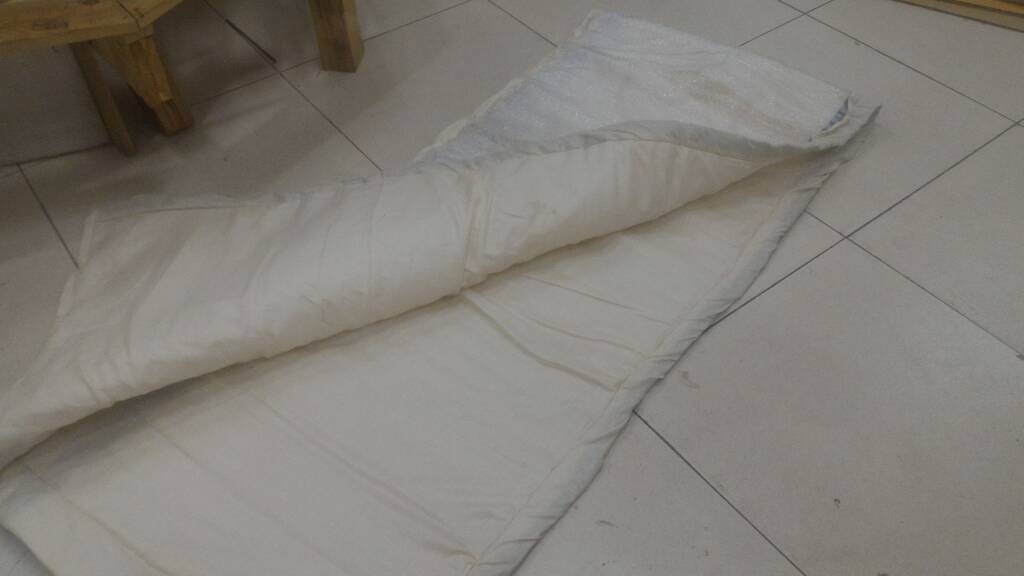Aashray is a product aimed at being an all-in-one shelter unit for victims stuck in flood hit regions. While tackling the challenges presented by current food aid packets provided by rescue forces, Aashray is designed to keep health and survival of the user at utmost priority with provisions ranging from assured packet delivery to proper dietary requirements to physical upkeep.
Aashray was first mused upon during the dreadful Chennai (a city in India) floods in 2015 which claimed the lives of about 500 people and displaced as much as 1.8 million people. These floods not only affected the lives of people just by displacing them from their homes but also created grim circumstances for people with shortage of basic survival essentials like food, clean drinking water and basic medicines.
During any flood rescue operation, food and essentials supply is one of the key areas that need attention. These tasks require both extreme accuracy and speed. In such cases challenges like, sinking of the food packets in the flood water, food packets getting stuck in unreachable places like trees due to the compromised aim of the rescue personnel or the packets simply getting ruined because of the high impact speed with which they hit roof tops or other hard surfaces, are common and can have drastic impact on survival.
Aashray (meaning 'Shelter' in Hindi) is a product that aims at providing better care to victims stuck in flood hit regions while also keeping easier deployment from rescue forces' perspective in consideration.




Researching for Aashray involved having a clear assessment of needs on two fronts, the flood victims and the rescuers.
Given the limited number of materials that can be provided due to weight and procurement difficulties in cases like these emergencies, determining the right resources and their amount was an important task. This required an extensive lookup into the safety guidelines and suggested food reserves for situations like these from various organizations. Mixing those in with cultural factors for countries like India was also put into consideration, for example, vegetarianism is a huge religious factor in India, so making sure that the provided packets could accommodate everyone was a necessary concern. Following this, exploration on various forums suggested that psychological upkeep was also important for situations like these and made me think of ways in which we could help people stranded in flood hit areas to not lose hope.

Another insight was from the rescue personnel’s perspective. The helicopter pilots though highly skilled had to concentrate more while maintaining lower altitudes, this though ensured proper food deployment to the victims in a particular area, compromised the quick-timed response needed to reach other areas. This prompted me to ideate something that could alleviate the rescue personnel’s problem.

A clearer articulation of the requirements helped me identify key areas that required attention. And this helped me list out important functional requirements that a product being used in a situation like this should have.


Based on the identified elements, I chose the form factor of a 'Sleeping Bag' for the product finally meant to be deployed. A sleeping bag can not only carry all the shortlisted items but also act as its own shelter unit, providing much needed insulation from the elements. It also can be folded, providing stackability for efficient distribution.
Having decided on the form factor, I set out to create a sleeping bag that served the exact articulated needs. To achieve this, I created a layered prototype. The outmost layer of the prototype was made from bubble wrap to make it impact resistant and buoyant, this was followed by a layer of thick foam for the same reasons. These were then followed by another layer of plastic film to make the structure coherent. The last and the innermost layer of the bag was a cotton cloth which was stitched together with plastic sheet to give comfortable airflow and soaking sweat. Anthropometry was another consideration to make the size of the bag inclusive for all.



Owing to its specific usage condition, Aashray was another product that couldn't be tested in the intended real world setting. The prototype was impact tested in a few conditions but given that bubble wrap loses its shock resistance with each impact, collecting real impact data was difficult. Apart from this, the current design of Aashray shows heavy reliance on plastic based materials which are highly unsustainable. Having suitable alternatives and testing them in the application scenario might lead to a better and a much more sustainable product.